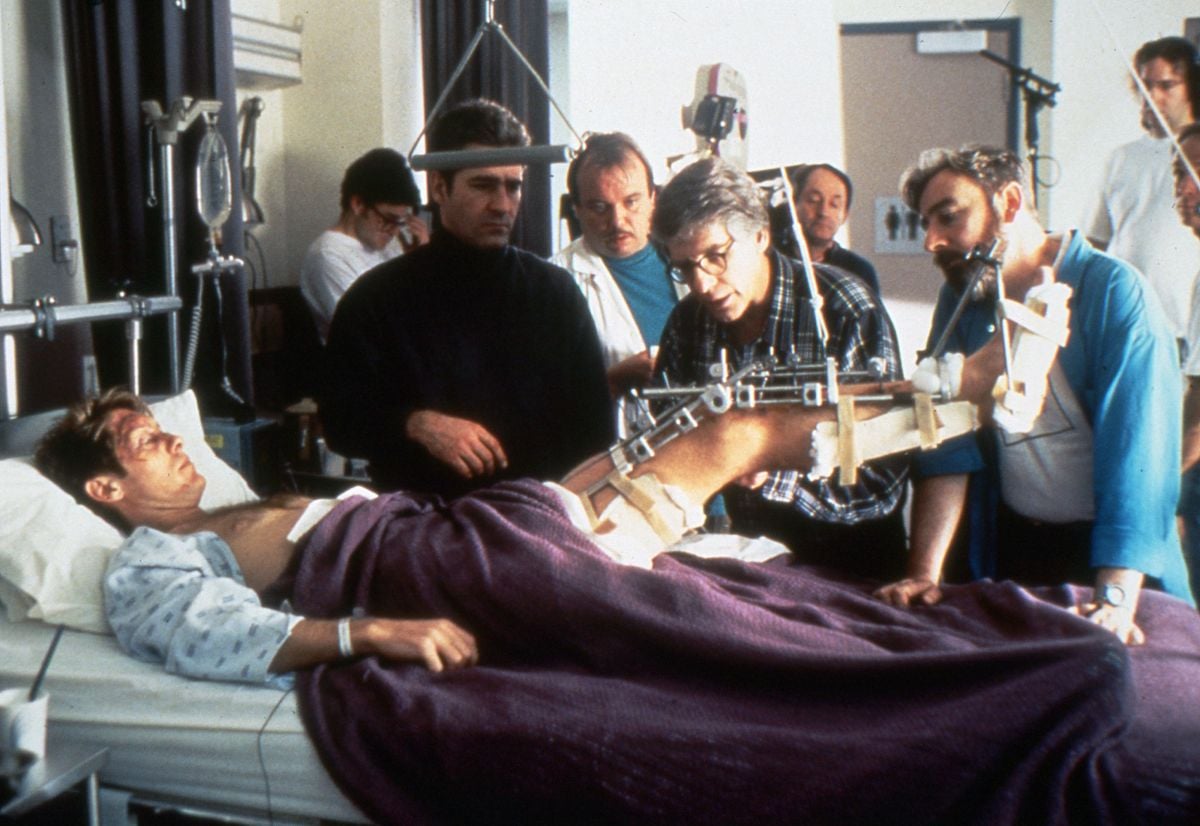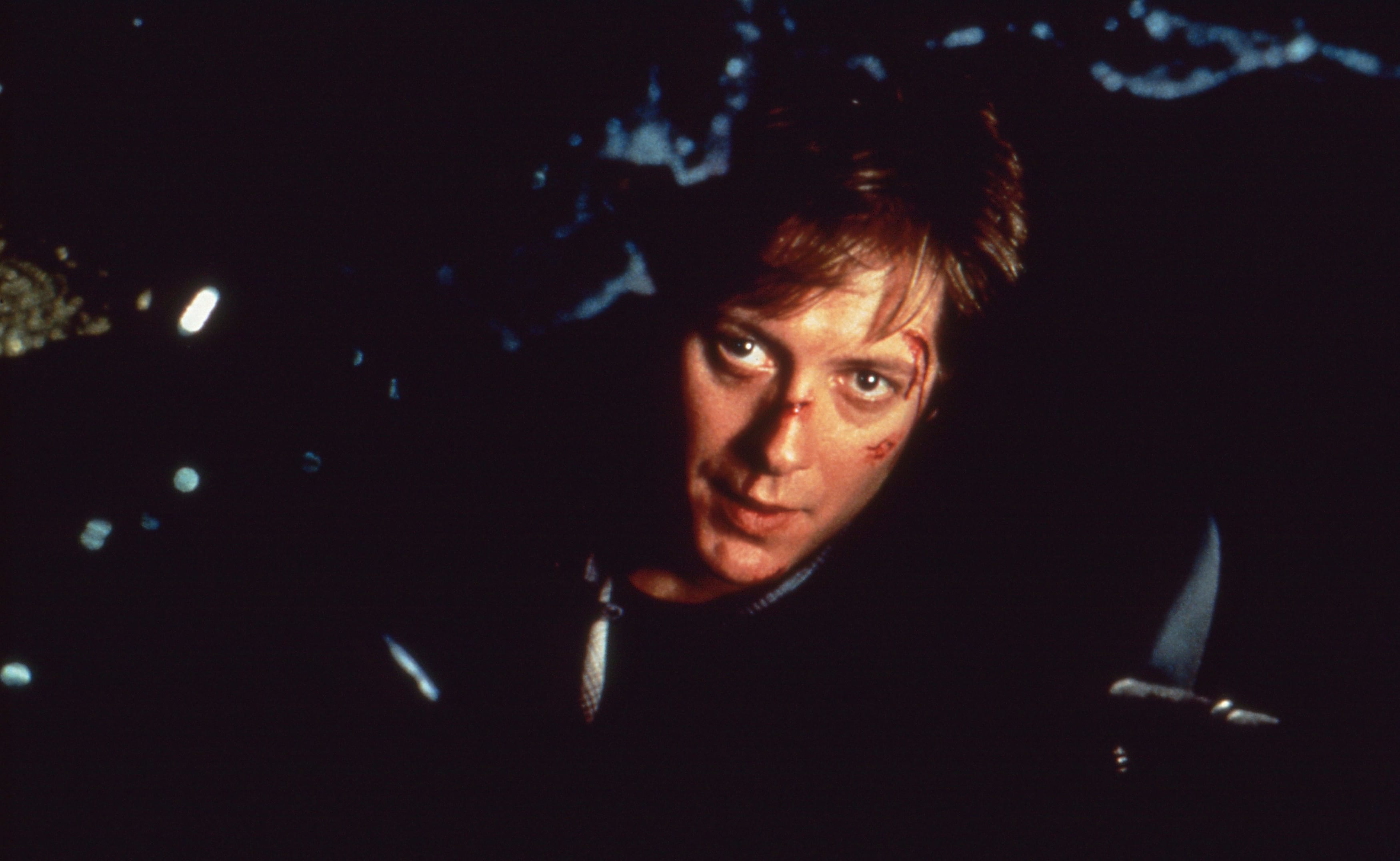
Crash: Auto Erotic
Director of photography Peter Suschitzky discusses the methods and motivations behind his latest feature, Crash.
Interview by Allen Daviau, ASC and Fred Elmes, ASC
Edited by David E. Williams
English cinematographer Peter Suschitzky recently arrived in Los Angeles to oversee the color timing of Mars Attacks!, the alien invasion spoof directed by Tim Burton [see AC Dec. 1996]. Taking a break from this task, he joined fellow cameramen Allen Daviau, ASC and Fred Elmes, ASC at the New Line Cinema screening room in Beverly Hills to watch Crash, Suschitzky's latest collaboration with Canadian director David Cronenberg.
With AC editors Stephen Pizzello and David E. Williams in tow, a leisurely dinner followed, during which Daviau and Elmes posed questions regarding the picture's unique visual approach and the means by which Suschitzky tackled its controversial subject.
Based on the 1973 novel of the same name by English author J.G. Ballard, Crash concerns television commercial producer James Ballard (James Spader) and his wife, Catherine (Debra Kara Unger), both of whom are engaging in kinky extramarital affairs. Later, the pair share details of their indiscretions, illustrating their emotional detachment. After being severely injured in a violent, head-on automobile collision, Ballard is thrust into a subculture of hedonistic extremism and becomes immersed in a nocturnal cult fixated upon the anticipation, and outcome, of car crashes.
Accompanied by Dr. Helen Remington (Holly Hunter), the scarred survivor of the crash he caused, Ballard soon meets Vaughan (Elias Koteas), the leader of the bizarre cabal. The producer is captivated by Vaughan's dogma about technology's ability to reshape the human form, and soon introduces his wife to this new interest, exposing them both to its dangers. Vaughan's obsessions — amplified sexuality wrapped in twisted chrome and steel — later become their own, leading to a series of graphic and often violent couplings.
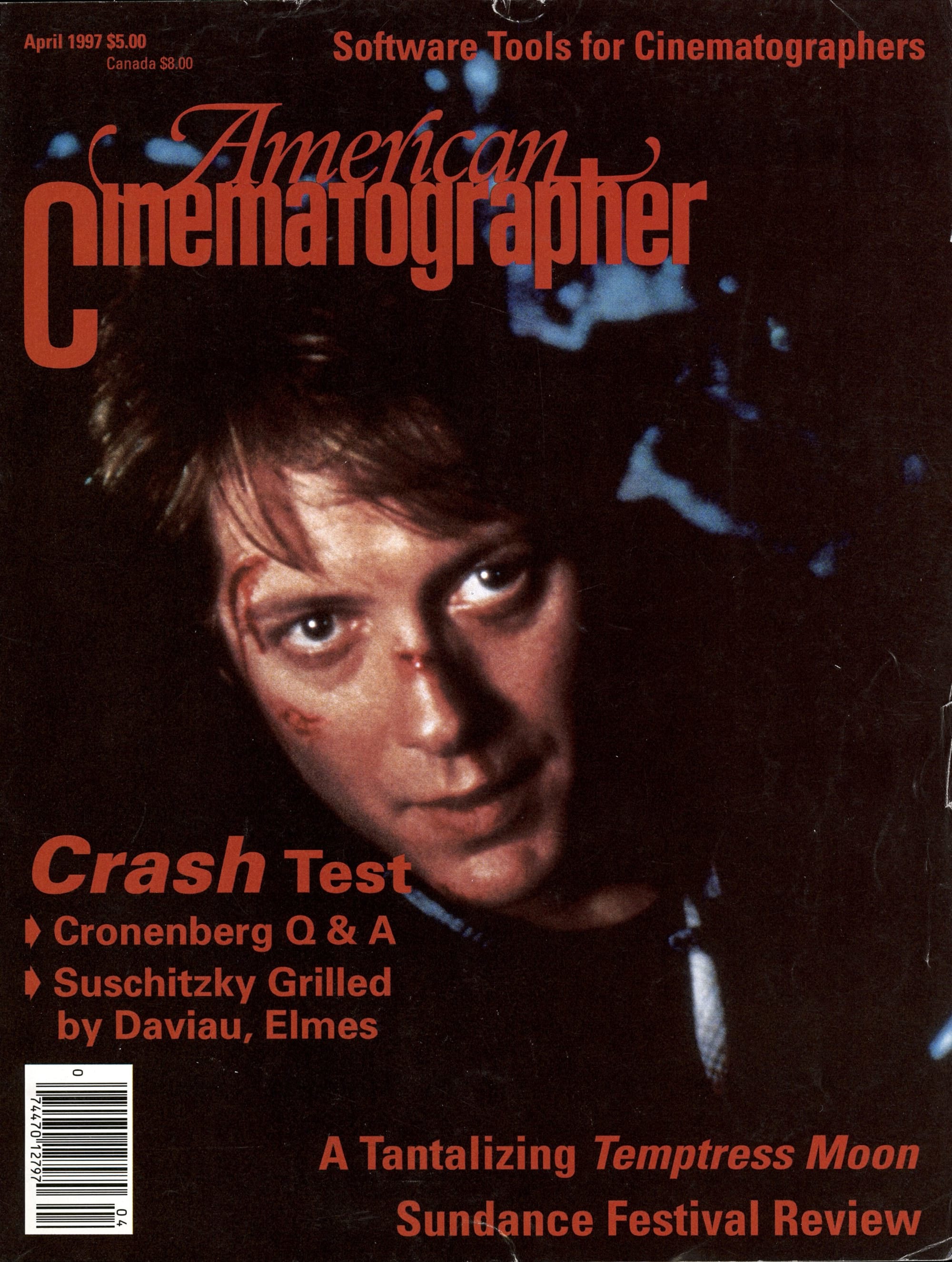
This link between injury and passion has been a primary focus of Crash's detractors. As a result of their ire, the film has been banned in various countries, and its U.S. release was postponed from late 1996 to March of this year. (See accompanying interview with director Cronenberg for further details.) However, the film also has its champions, and earned a Special Jury Prize for ''audacity and innovation" at last year's Cannes Film Festival.
In recognition of the film's artistic daring, AC hereby presents excerpts from the unique interview which followed a screening arranged by ever-accommodating Fine Line Pictures publicist Juli Goodwin.
Details about the key participants are as follows:
• Peter Suschitzky's other credits include Where the Heart Is, Valentino, The Rocky Horror Picture Show, The Empire Strikes Back and Immortal Beloved. His previous projects with Cronenberg are Dead Ringers, Naked Lunch and M. Butterfly.
• Allen Daviau's filmography includes E.T: The Extraterrestrial, The Color Purple, Empire of the Sun (also adapted from a novel by J.G. Ballard), Avalon and Bugsy.
• Fred Elmes' credits include The Killing of a Chinese Bookie, Blue Velvet, River's Edge, Wild At Heart, Night On Earth, and director Ang Lee's upcoming feature Ice Storm.
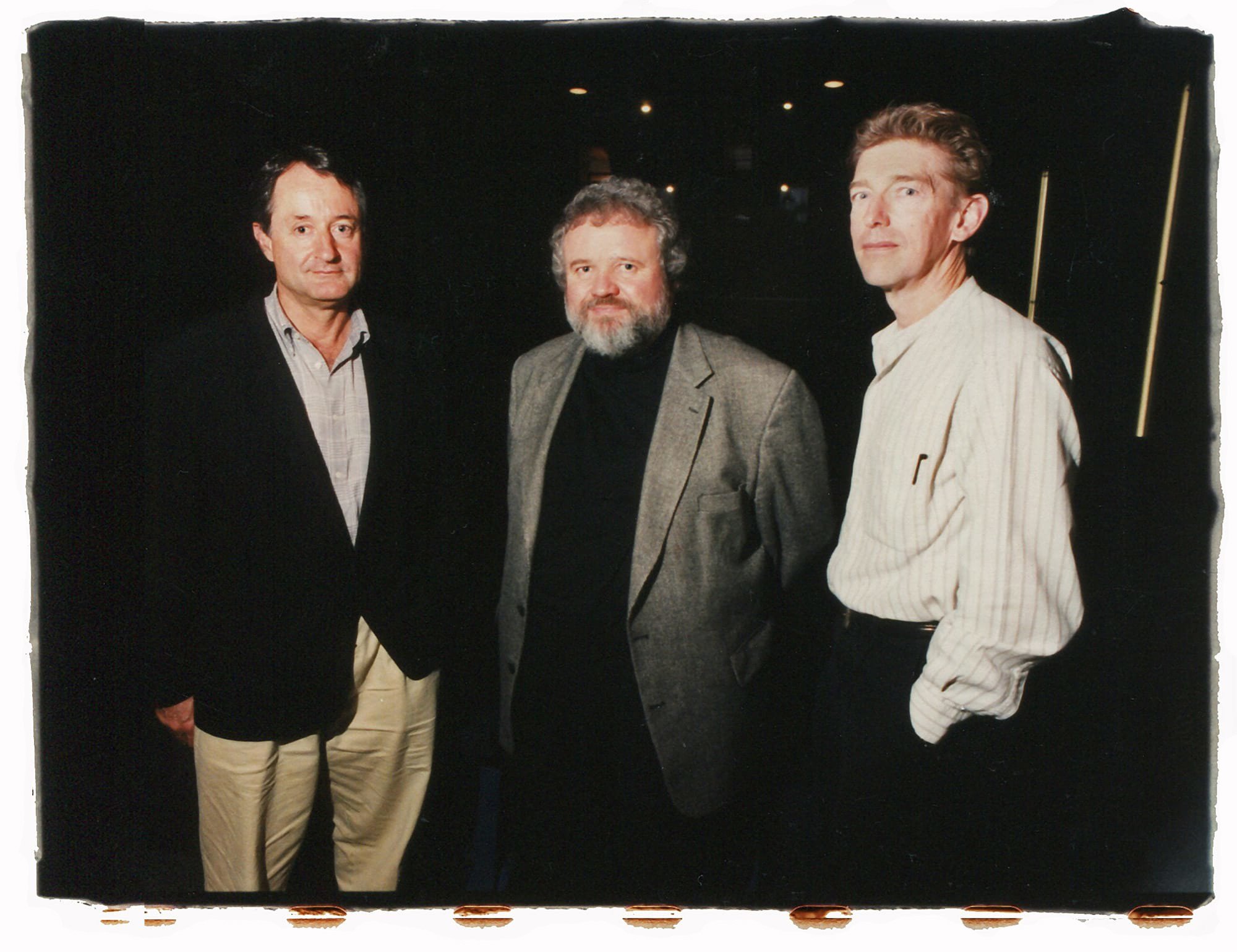
Allen Daviau, ASC: Peter, I have always admired the choices you have made and the variety of films you have done over your career. It's interesting that you have The Empire Strikes Back on your resume among these a smaller, offbeat films.
Peter Suschitzky: As you can imagine, it would have been easy for me to have done a lot of effects films after that. But after doing one big effects film, you don't want to rush right into another.
Daviau: Absolutely. That kind of typecasting can happen very quickly to any cinematographer. After Fearless, I was offered every 'airplane in trouble' picture that went into production. Coincidentally, I was also up for an 'aftermath of a car crash' picture not long after that.
Fred Elmes, ASC: But I'm sure the story for that film was nothing like what we saw tonight.
Daviau: No, not at all. I really admire the fact that this picture is very stylized, but always within the realm of naturalism — it's not as 'out there' as highly-stylized piece like The Crow II. That's a very delicate thing you have done here.
Elmes: I think the world that you and David [Cronenberg] created exists right there on the edge of reality, so to take it to another plane visually — say, to another level of color — would have been out of place.
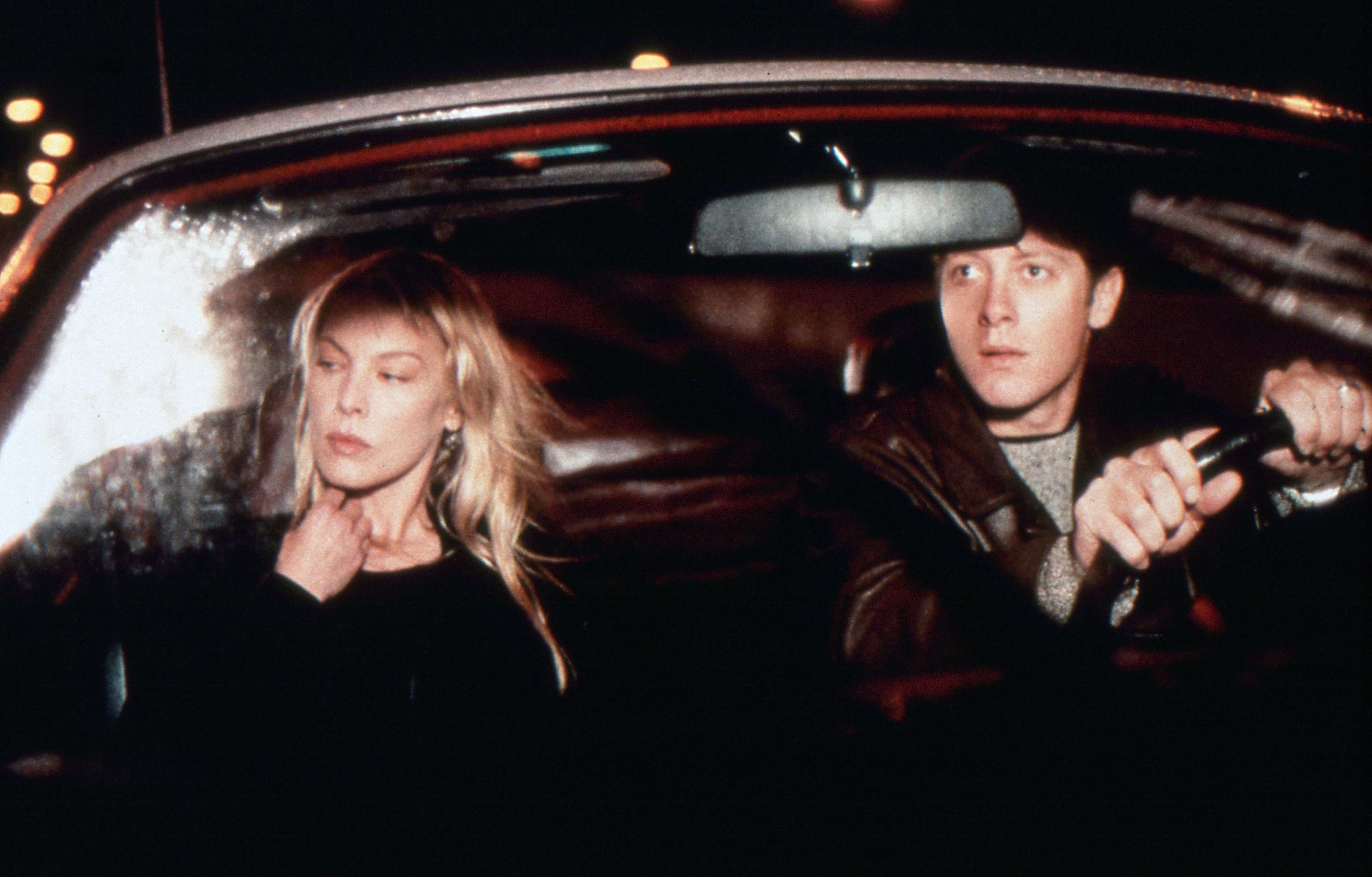
Suschitzky: I think so too. I think David feels that whatever subject he's dealing with is always so unusual that it's best to avoid getting too stylized. While we were doing Naked Lunch, I suggested that perhaps we should go Expressionists in design, in light of the hallucinations and trips that the main character goes through. But David felt strongly that the picture should always be based in reality, and he was right. We had the same production designer on Crash as we did on Naked Lunch [Carol Spier], but we had such a small budget on this film— about $6 million — that it wasn't an issue. On Crash, we didn't build nearly as much as we did on Naked Lunch; instead of sets, we relied mostly on actual locations in Toronto.
Elmes: But the stylized city you've created for the film within this real city is very elegant. It's very clean, and there's nothing superfluous — you see just the right parts, with the freeways in the background.
Daviau: But there was some work done on stage — the apartment scenes, for instance?
Suschitzky: Yes, throughout the film we have scenes in [the Ballards'] apartment, and that was a mixture of location and studio work. There is a sequence that takes place on their balcony overlooking a freeway. Well, everything looking out is, of course, a location, while the reverses were done in the studio. We actually had a hothead on location and for a moment I thought about just extending it out and getting the shots looking back in. Of course that would have been impossible since the interior of the location apartment didn't give us what we needed for the other scenes, so we built the interior elsewhere — which didn't match the location.
Daviau: When you're matching stage lighting to what you've already shot, do you use something like a Moviola picture head with a piece of print to look at the master shot?
Suschitzky: Yes, exactly, while we're on the stage. The gaffer also always keeps a diagram, which includes the gels we've used. But if a scene is played back for me, I can more or less re-create it. It's mostly in my head anyway, but replaying the scene on film can be a great help.
Elmes: It's certainly better that the video version of that tactic — with a VHS tape standing in as a reference.
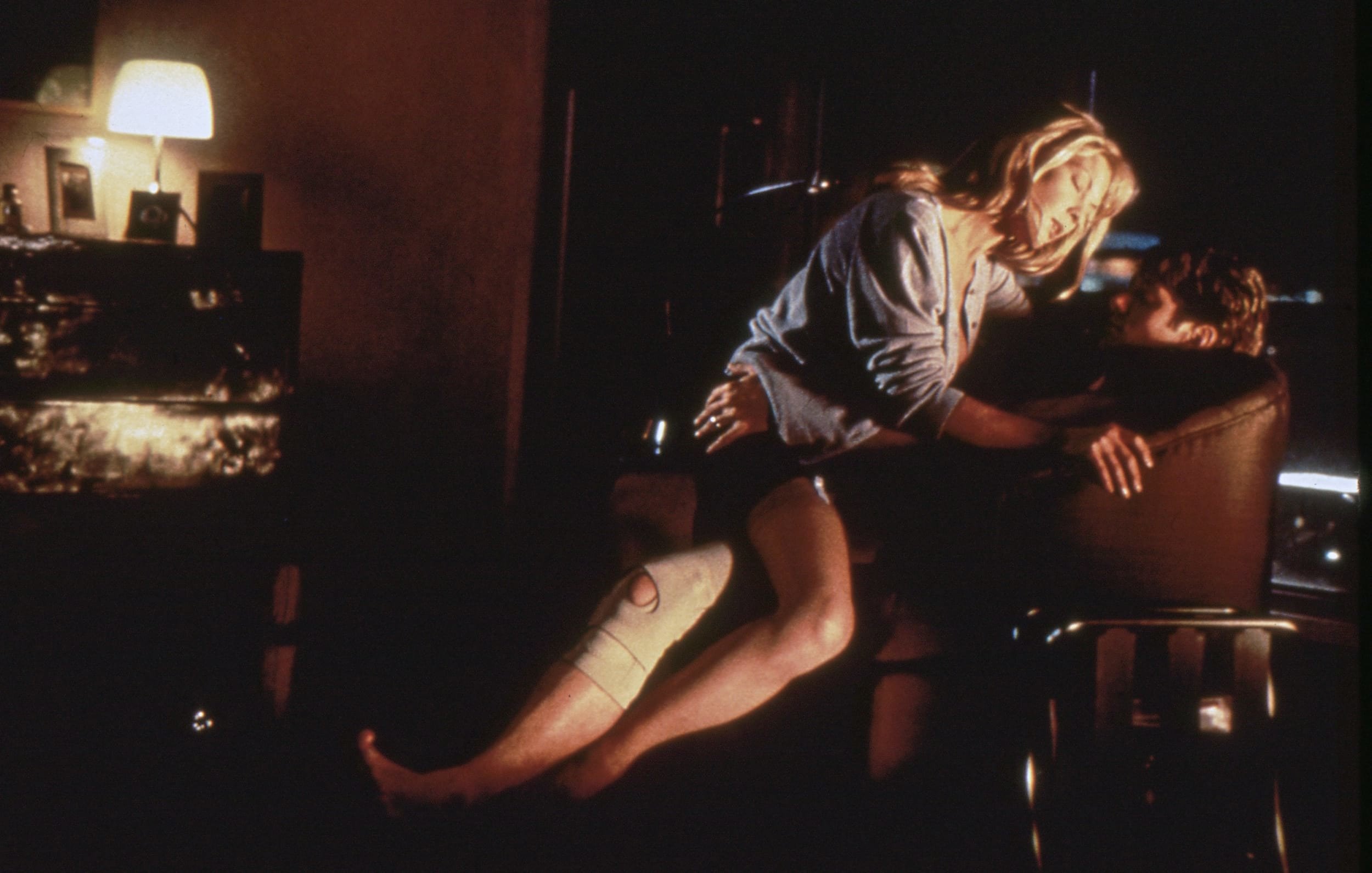
Daviau: Has anyone tried to get you to do a feature film without film rushes?
Suschitzky: Actually, that was the case on Crash. The budget was very tight and the production manager asked, 'Is it okay if we just use video dailies?' And I said, 'No, it's not. But I'll tell you what: you can keep me happy by showing me just one take of each setup.' That way we managed to save money.
Elmes: I did that exact thing on an independent film I recently finished, The Empty Mirror. We'd print one selected take, screen it, and then take home a daily cassette at night to see what we had in the performances.
Daviau: Well, what I wonder about with video dailies is, what are they going to do when it comes time to do a preview screening of the film if they have no workprint to put together and screen? The only option is to go back in and do a really terrible invasion of the negative...
Elmes: ...and print additional take you haven't used in order to put something together to show people. It's a real problem. In addition, the printer lights on these various print runs will never be the same, so there is often a lot of mismatching even within very simply cut scenes.
Daviau: Part of the cameraman's responsibility is to produce a good, representative cutting copy that can be shown to a preview audience. So the notion of video dailies is the biggest false economy in the world.
Elmes: Technicolor in Los Angeles has a system by which you can track timing lights from your dailies all the way through to your answer print. That way, when you like the way the dailies looked, the key code is used to track the timing lights to your first answer print. You can also use that information for reprinting a scene if necessary.
Suschitzky: Well, you'll notice too that due to the fact that video dailies must be transferred, you'll get your rushes much later in the day than you otherwise would.
Daviau: And there are also cases where you have a director who doesn't come to projected rushes, and only sees the film on video, or on the Avid or Lightworks screen. Directors like that will have no idea what you're talking about, because they haven't really seen the same thing. There is no direct correlation between video and film. And with all due respect to the various charts that people have designed to deal with this problem, it still hasn't been solved. Peter, you're based in London...
Suschitzky: Yes, but I never work there — I haven't since 1984.
Daviau: You don't bring a British crew with you when you shoot in Canada or in the U.S.?
Suschitzky: I don't even try to. There are wonderful crews in both places, and I believe it creates some resentment if one brings people in from the outside. I'm enough already, and I feel privileged to be invited, but I think it's wrong to bring in an entire crew. I often prefer to operate myself, especially on a film with the scale of Crash. I feel closer to the movie if I'm looking through the camera, as if I am the first audience to see the movie. I can see my mistakes much more quickly! On this last picture [Mars Attacks!], we were dealing with an extremely large production, and I was lucky enough to work with one of the best operators around, Ray de la Motte. But I do get more of a kick out of it if I'm looking through the camera.
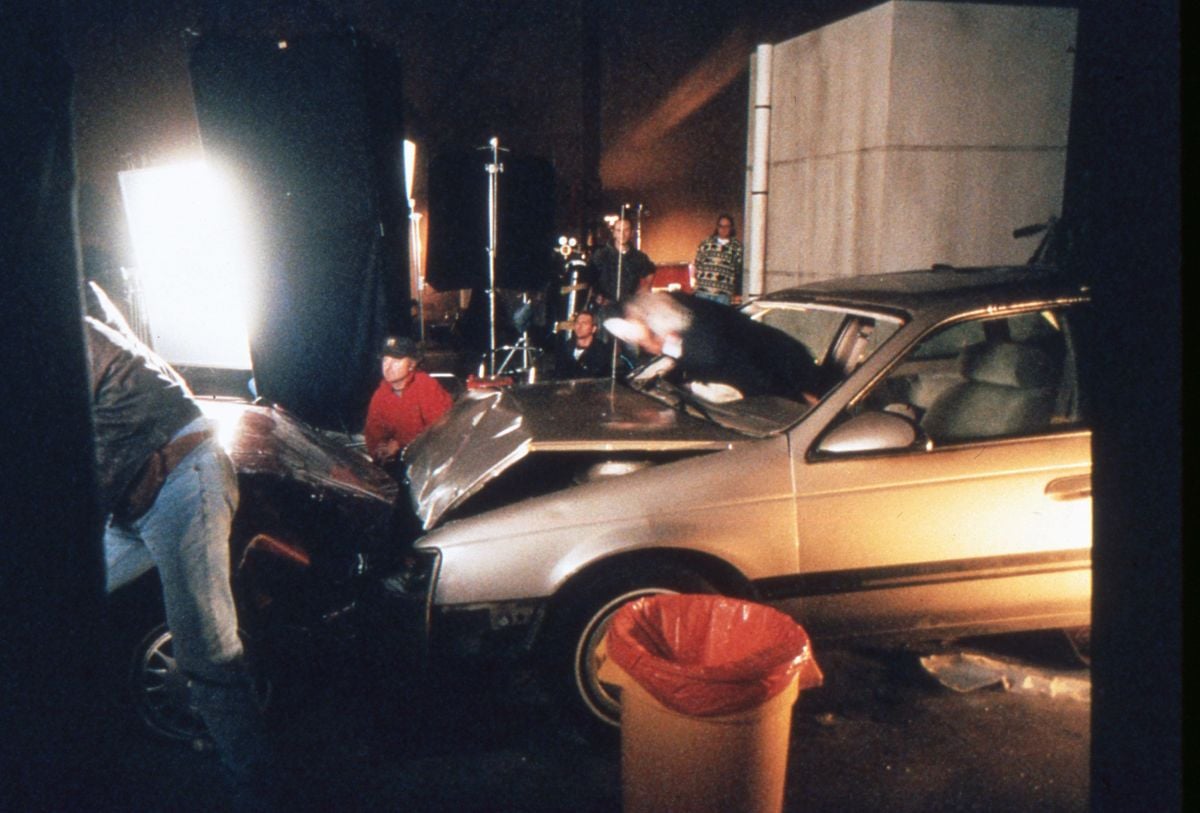
Elmes: How did you and your grips plan the rigging for the cars and the shots you wanted? And how did you decide what could be process trailers and what had to be done for real?
Suschitzky: If the scene concerned the actors in the car, we would definitely use the process trailer, but if we had to see the car come into frame, we would naturally use the real thing. My gaffer and I tried to think of different ways to enhance the sense of movement with the lighting. We were generally shooting at very low light levels, so we came up with a rig that involved a reflector and a lamp or two shining into it. By either moving the reflector or the lamps, plus some additional lamps that were panned in and out at the sides, we got a satisfactory effect. Sometimes it would be too hard and spotty, and you could even see the joins in the reflector material, but it usually worked. Those were mostly tungsten lights. We were primarily working with very small, lightweight sources, although for the exterior scene in which some characters recreate James Dean's car crash for an audience, we did use a Musco Light. Unfortunately, it burned straight through the gel frames that we had spent hours putting up on it, and the scene looks much bluer than I had intended. I actually don't like that electric blue look — it's a mistake in the movie.
Daviau: There is so much car work in this film that I had to wonder how much was poor-man's process.
Suschitzky: Well, not much. In fact the only shots done with poor-man's process were the detail shots of the dashboard, or things of that nature. As I'm sure you've gathered, there were a number of risky things to shoot on this film, in terms of the car work. The rain scene at the end of the picture was done with the Motocam system, which is basically a motorcycle with a sidecar. It allowed us to get the camera really low, and it's a powerful bike, so it's very maneuverable.
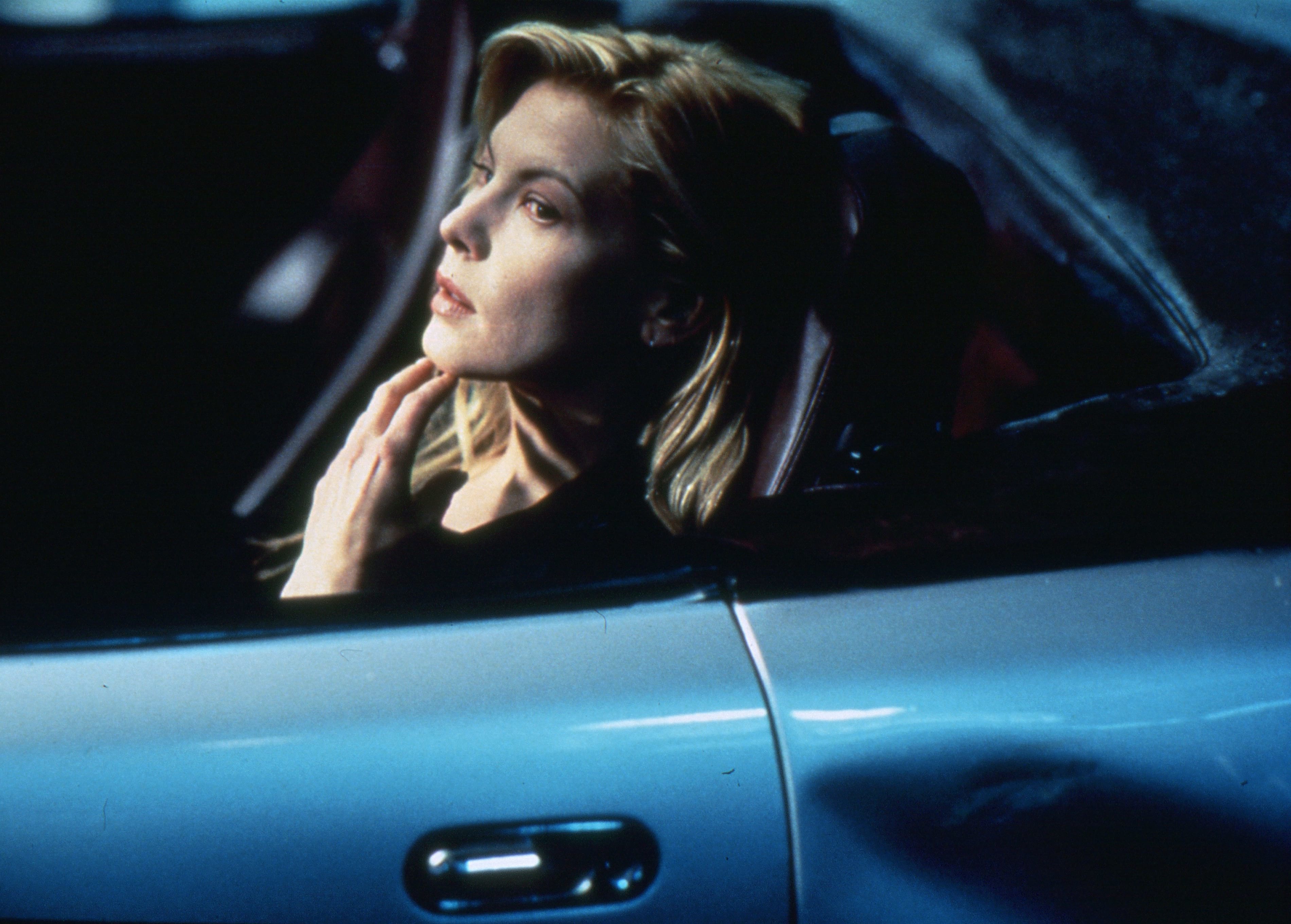
Elmes: What I liked in your car work was the wonderful use of reflections and reminders of the world going by. So although we're looking at the people inside of this claustrophobic capsule, we see things passing by, sometimes just inches away. There were several times during the chase scene when the camera swept between cars and ended up only a foot or two off the bumper of the Lincoln.
Suschitzky: [Laughs.] We had some excitement shooting that particular sequence. The elevated freeway we were using was incomplete, so it only ran for a distance before coming to a very abrupt end. We were using this stretch in both directions. And this was fine if you are in the normal, 'correct' direction. Well, on one shot, our driver had forgotten that he was going in the 'wrong' direction — at night, in the rain, on this incomplete freeway — and we missed the off-ramp and were suddenly faced with a precipice. We had to scream for him to stop because we were just a few yards from the end of the ramp; we came very close to going over the edge! Very few people realize how long it takes to set up a shot on a car.
Elmes: This is very true, as I found out during my experience on Night on Earth. When Jim Jarmusch conceived the film, he thought of sets and set pieces in connection with performances. Well, having two or three actors in a car was like, 'I've got 'em! They're not going anywhere!' But he didn't fully realize the complexity of keeping it visually alive.
Daviau: I absolutely loved some of the high-from-outside angles you got in Crash. Consider them stolen! [Laughs.] One of the most stilted and overused angles in car photography is the two-shot of the front seat from the hood or towing vehicle. God forbid there are people in the back seat. I once got a director who let me do a car sequence strictly with profiles. It worked really well, because I was able to use the entire hood for the lighting-effect rigs; I've just never bought the old dashboard-light method, because it is both so restrictive and artificial. A good deal of Crash takes place at night. Did you base a lot of your decisions on the texture of the film stock that would have the speed to do that, and how you'd carry it through the day's scenes?
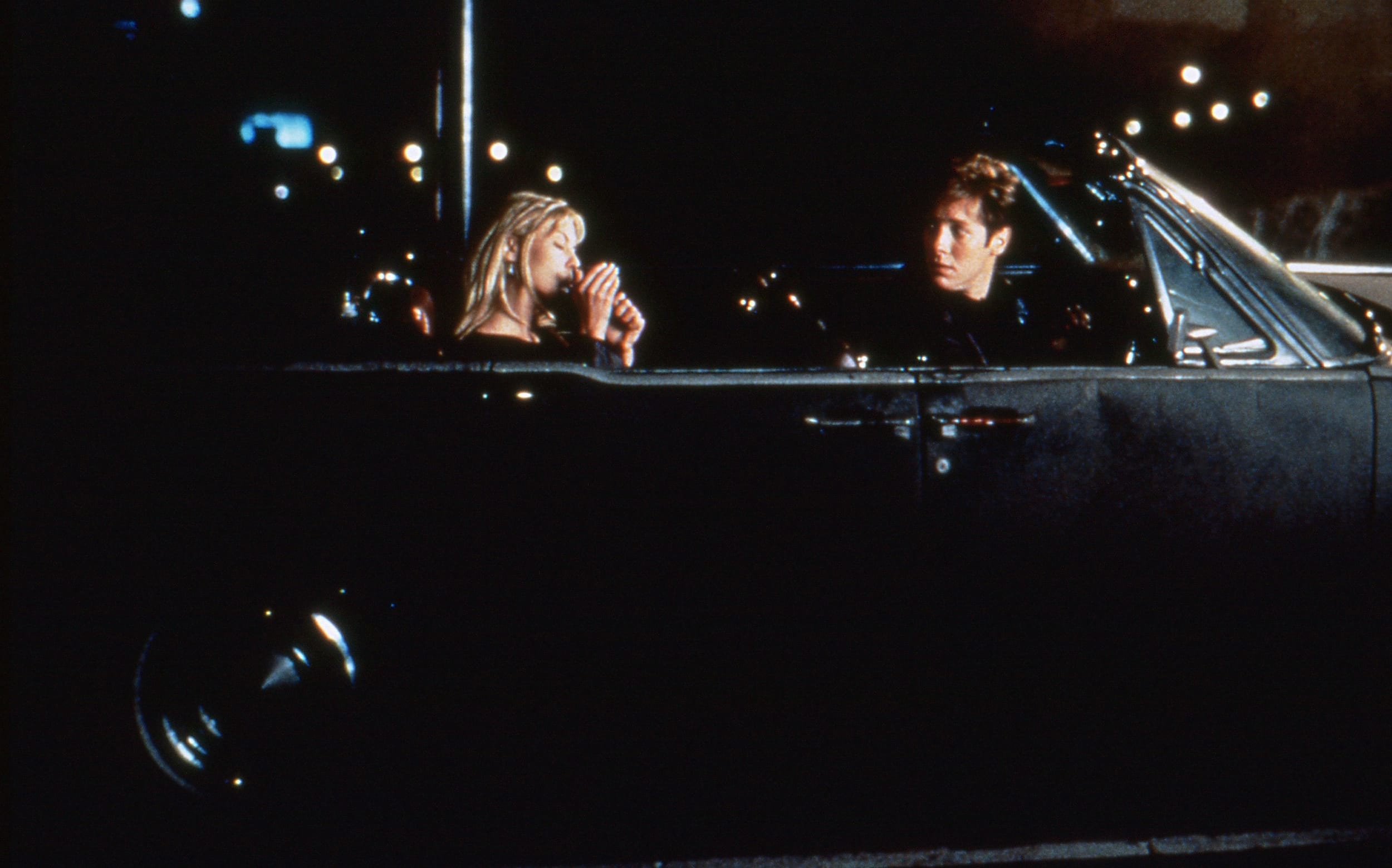
Suschitzky: My process of finding a look for a film comes directly from the material. The direction which I take may change once I see the locations, the actors, the costumes — with each bit of detail — and finally the performances. Earlier in my career I might have fooled myself by saying, 'On this film, go grainy and use bounced light and make it very naturalistic.' But I've settled into a simpler, more instinctual way of working now. My initial thought about Crash was that it was a very bleak, hard story. While it might sound simplistic, I wanted to photograph the picture to look harsher that I normally would do things. The last film I did with David was M. Butterfly, which was more romantic, gentle and lush in tone. I know that this new picture looks different from that one, but stepping back I can also see this sort of line I have taken from one film to the next. One doesn't expect an actor to be completely different from role to role. They are cast because of the qualities they have or can give, and I feel that's also true for directors of photography. We can get typecast, but we also get cast because of the material we have behind us. I wanted to make Crash more contrasty and hard, although sometimes I wonder if I went too far with that. Looking at it tonight I wondered if it was occasionally too unfriendly and ugly. But I suppose it's suitable for the story.
Daviau: It is, absolutely. Of course, people will want to know what kinds of tests you did to arrive at that choice.
Suschitzky: I did do tests, primarily because we were shooting so much at night. But my choice [for the nighttime work] was really only between two stocks, the Kodak high-speed [5296] and the Fuji high-speed [8571] — Crash was shot before 98 became available. I instantly preferred the Fuji. It had much tighter grain and it was much sharper — and not quite as contrasty — at the same speeds. I think the same is still true when it is compared to 98. Having chosen this 500 ASA Fuji stock, my original intention was to shoot the rest of the film on Kodak. On a sequence change, you'd never notice the difference. But as I thought about it, I considered the fact that our budget was very tight on money, so I asked the production manager to do a price comparison. He came back to me and said, 'I'm not asking you to shoot the film on Fuji, but we would save quite a lot of money.' So I decided to test Fuji's other stocks, and although I couldn't say instinctively that they were better than [what Kodak offered], they compared well.
Elmes: Did you do any pushing?
Suschitzky: I almost never push film, because I think it's always better to underexpose than push; that's just my preference. But there was one scene at the end of the picture — Vaughan and Ballard are driving on the rainy freeway at night — that we couldn't light at all. The area we were covering was just too big, so we shot it with available streetlights. It didn't require pushing, but I really didn't know what was going to happen. I just thought, 'Well, something is got to come out.' We had headlights, we had rain, and we had all the reflections that those elements created. There were several locations in which available light took part.
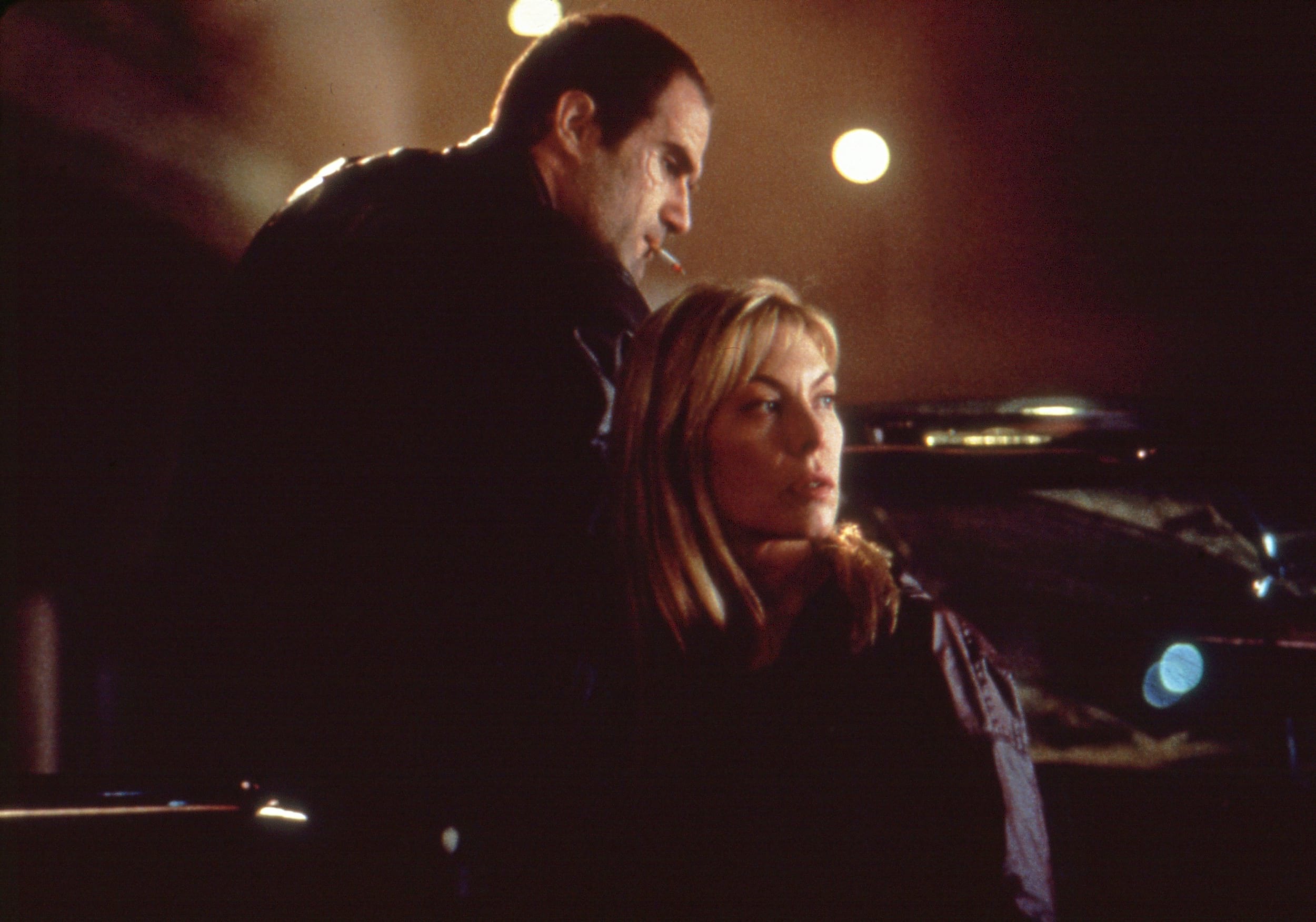
Vaughan (Elias
Koteas) bond at
the scene of a
highway mishap.
Suschitzky
primarily utilized
small tungsten
fixtures for the
many night
exteriors, relying
heavily on Fuji's
500 ASA Super-F
8571 stock.
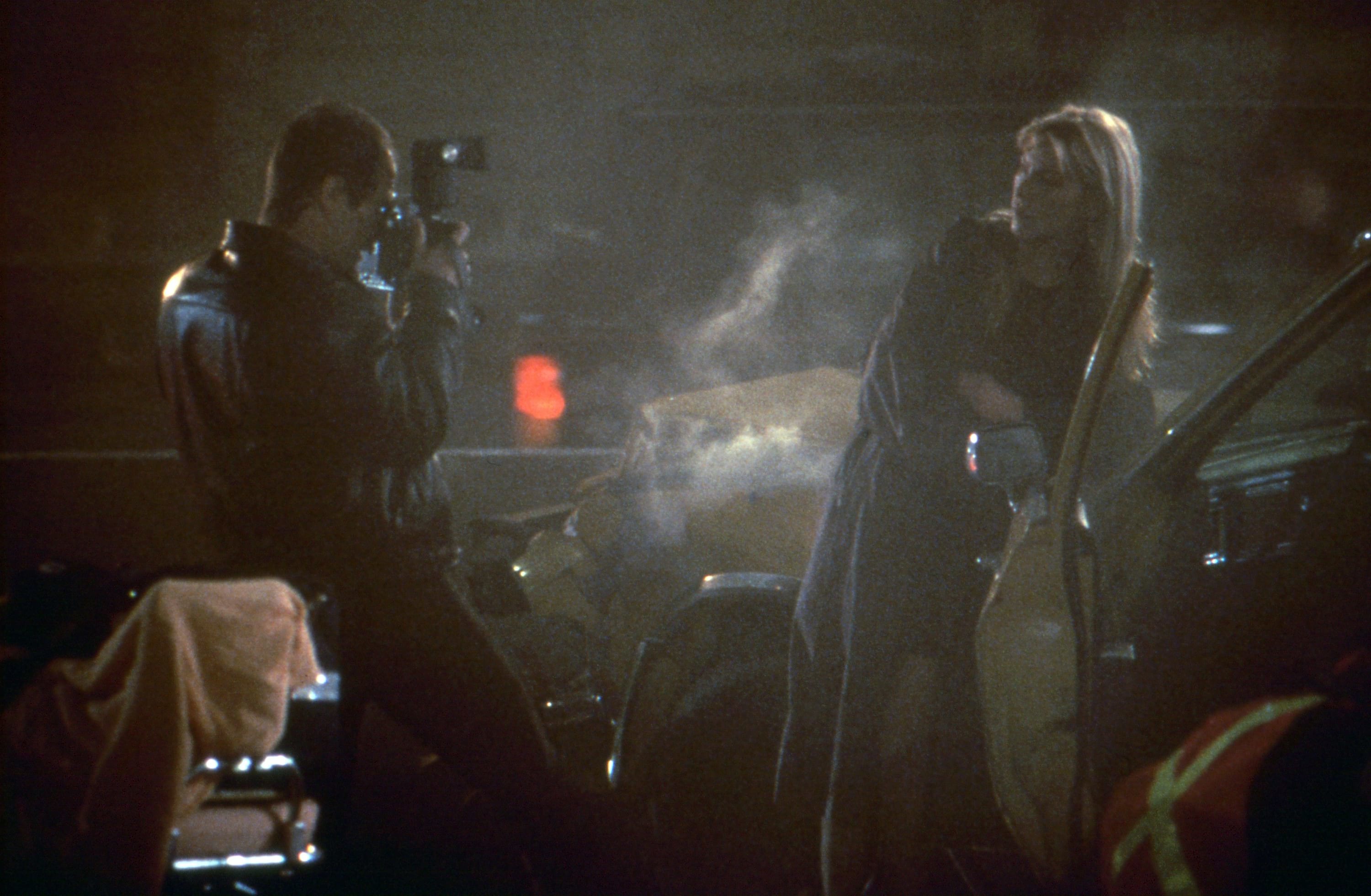
Daviau: Certainly one of the problems you must have had was in blending the available light with the prosthetic makeup that the actors wore. I thought the makeup work was excellent, but I can just imagine dealing with fluorescent, sodium-vapor and mercury-vapor sources.
Elmes: That must have really played havoc. With rubber prosthetics, you never know how they will look until you photograph them. The sharp close-ups looked terrific.
Daviau: Which lenses were you using?
Suschitzky: We were on Primos, without any filtration.
Daviau: Would you say that you shot a thinner negative than you normally would?
Suschitzky: On some of the night scenes, yes.
Daviau: And I assume you were using the 'appropriate' stock for your conditions, such as the 100 ASA stock for daylight exteriors?
Suschitzky: When I could. But sometimes during the daytime we still had to rely on the faster stocks, especially in the garage locations or under overpasses. One example is the scene early on in which Ballard arrives to inspect his wrecked car at the impound lot. That location was all in the shadows under a freeway structure. We used the medium-speed Fuji stock for that sequence — 250 ASA [8551] — but we were still wide open because the weather was so bad. It was freezing cold — down to -8°C — throughout the shoot, and often overcast.
Elmes: You certainly had some brave actors.
Daviau: There must have been a terrific amount of trust placed in you when they were being photographed in such chilling temperatures with nudity involved. How do you help keep actors comfortable in that situation?
Suschitzky: We were a very small family group on that shoot, and the atmosphere was very conducive to just doing the work, having a nice time, and laughing a lot.
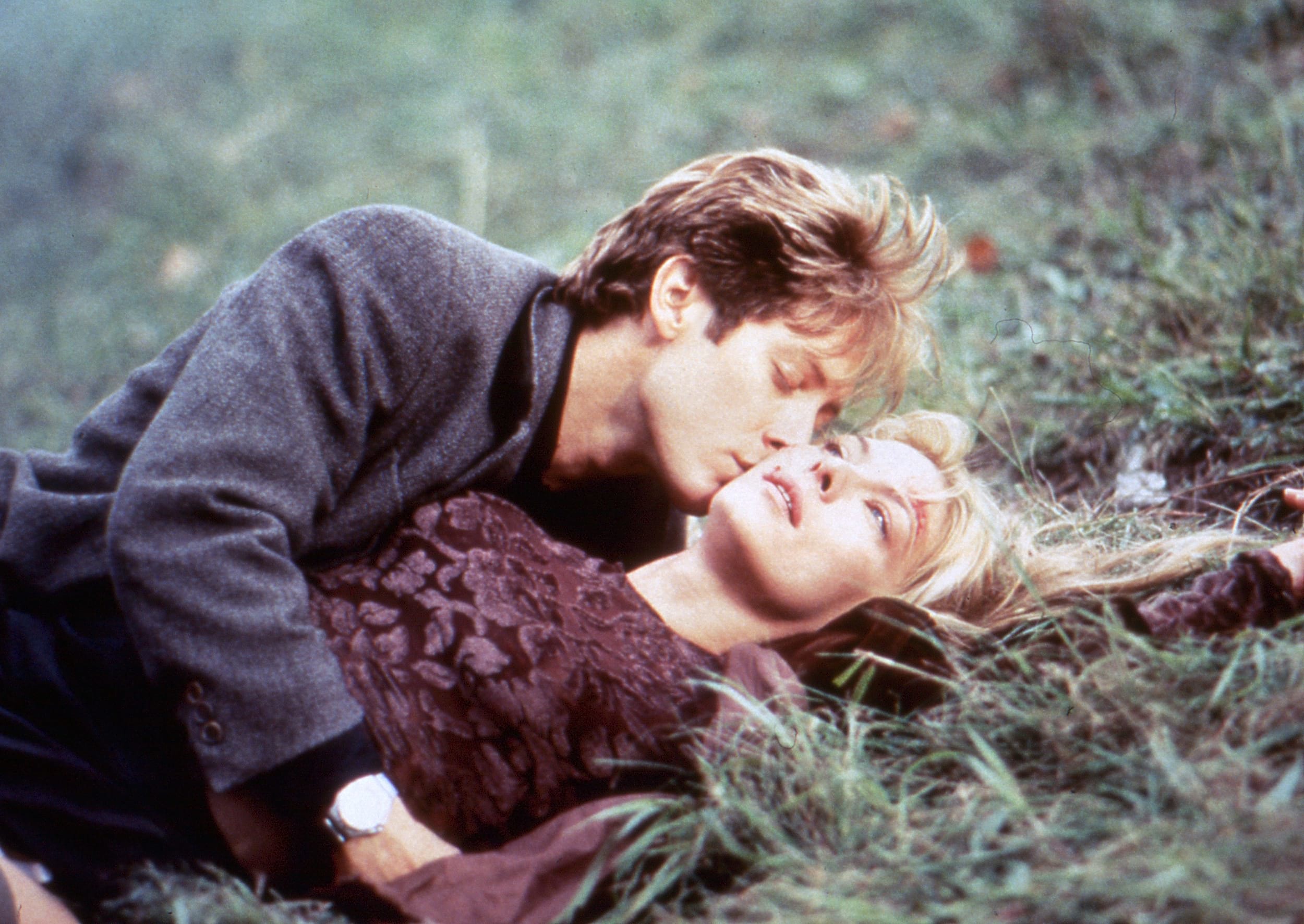
Daviau: I always find this a difficult question to answer, but is there a sequence that you are most proud of in the picture?
Suschitzky: Well, I like the look of some of the love scenes, particularly the one between Ballard and his wife. I tried to make that more attractive to look at; I didn't try to be hard and gritty.
Daviau: That's certainly an oasis in the middle of the film.
Stephen Pizzello: Did Helmut Newton's photography factor into any of the discussions you had with Cronenberg? The opening sequence, beginning with the shot of Debra Unger's shoes beneath an airplane wing, is reminiscent of his work.
Suschitzky: No, but I did at one point joke to David that Rosanna Arquette's character is sort of a cross between Pinnochio and a Helmut Newton model. [Laughs.] Of course, I'm very familiar with Helmut's work, and we have actually worked together occasionally on commercials.

Daviau: Was it calmly assumed at the beginning of the shoot that you would be getting an NC-17 rating? Was Fine Line [the distributor] comfortable with that?
Suschitzky: That was all decided up front. There was no way this film could have been made without that assumption up front.
Daviau: The picture certainly makes its commitment to [that rating] early on. Even though you have done three other films with Cronenberg, what discussions did you go through to decide the look of this picture, and what questions were asked by each of you?
Suschitzky: I hope I'm not going to disappoint you, but David and I have a very instinctive relationship and work together very easily without many words. We don't often talk about the specifics of the look. On my first experience with David, after I had read the script for Dead Ringers, we did go through a lot of that. We were on opposite sides of the Atlantic Ocean, just talking on the telephone, and I expressed how I saw that picture as being quite cold and elegant. On Naked Lunch, I simply explained that I felt it needed an Expressionistic approach. [The setting] reminded me of paintings of that era — 1910 to 1935 — which are very important to how I see things. We didn't really make the film look like that, but those ideas were in my subconscious. On Crash, I've already described the hard look I was after, but we drove around Toronto a bit in his car and looked at the roads we would be using. Still, we didn't discuss things too specifically. David loves driving, and he took me around some very fast bends. [Laughs.]
David E. Williams: Photographically, the crash sequences seemed to be done in a way that would actually drain away any suspense or excitement in the usual cinematic sense.
Suschitzky: What David said was, 'We don't have the money to make this an action movie, and that's not my intention anyway.' So the crashes were planned in a very minimalist way. For instance, for Vaughan's crash at the end of the picture, we couldn't shoot him going over the edge of the overpass. We didn't have that kind of budget, and we were faced with a very strict time limit imposed by our agreement with the police and the highway department — just six hours of shooting each night. We couldn't afford to shoot long and break that good will.
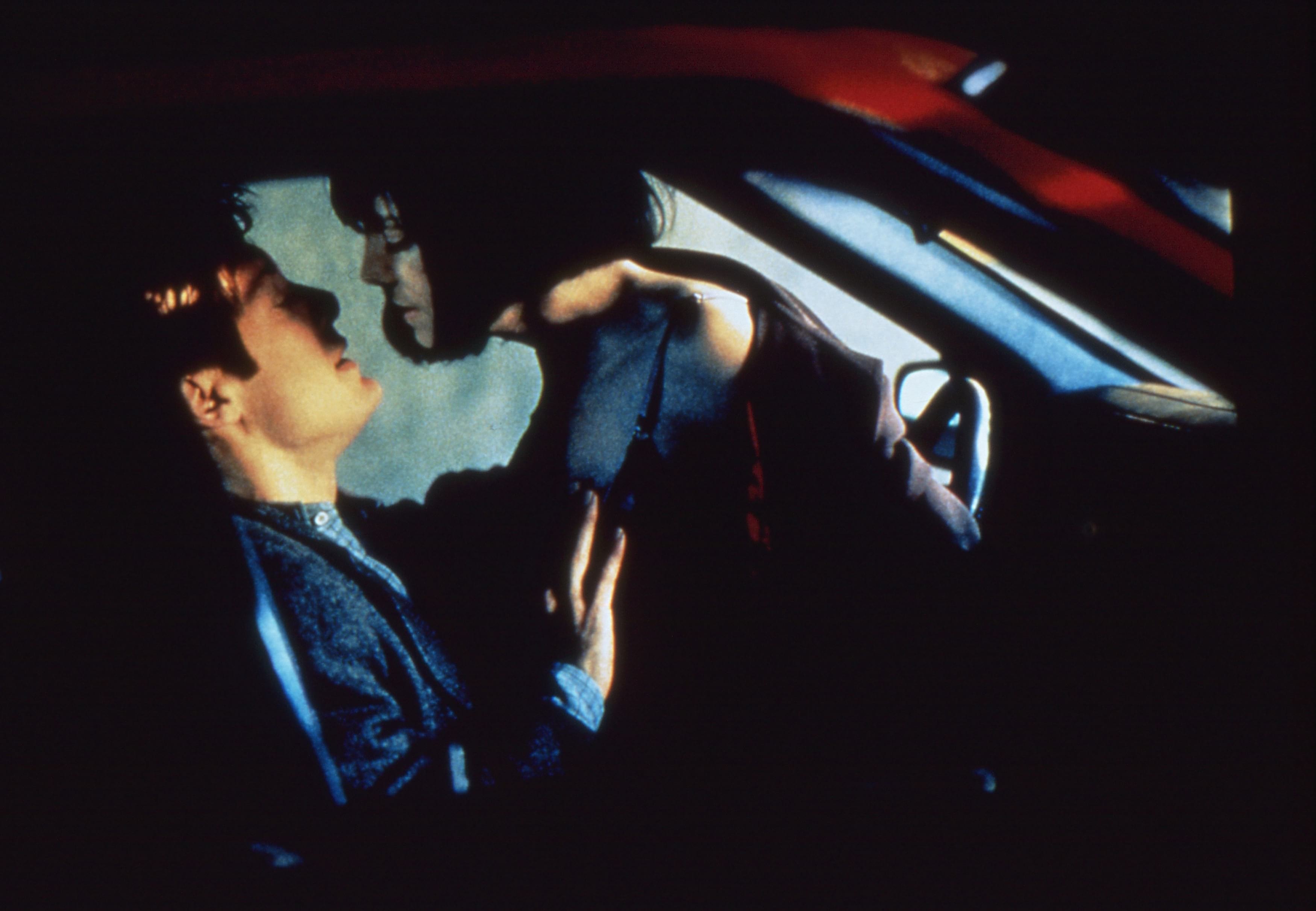
Daviau: What kinds of safety precautions did you take for the car scenes?
Suschitzky: We often used toy cars on a little road, with our stunt coordinator showing what could be done in a given situation. It then became a negotiation, with David asking, 'Well, then can we do this?' and the scene or shot being worked out from there. Fortunately, since he himself is an amateur race diver of Formula One cars of the '50s, David is very 'car-aware.'
Daviau: Was there a piece of equipment that you really could have used for the driving scenes that hasn't been invented yet?
Suschitzky: [Laughs] Yes, the Pana-Hot Seat — something to keep us warm!
Daviau: When I think about the visual concept for any picture I'm doing, I always like to use the term 'design and discovery.' You start out with some kind design, but you discover what the look of the picture will be along the way. I find that it has a lot to do with the actors — learning to appreciate what their performances are like, and what you discover in their faces.
Suschitzky: I always like to shoot makeup tests just to get to know their faces and to learn which direction the light should fall on them. That also breaks the ice between you and the performer, especially if you don't know each other.
Elmes: It's great to get the director to sit with you in the theater during test dailies. You might have five minutes of an actor standing there on screen, looking in different directions with different wardrobe and hairstyles, and if you can be objective for a moment, you can really discuss what things look like. Many directors don't feel the need to do that, but they usually love it after they've done it.
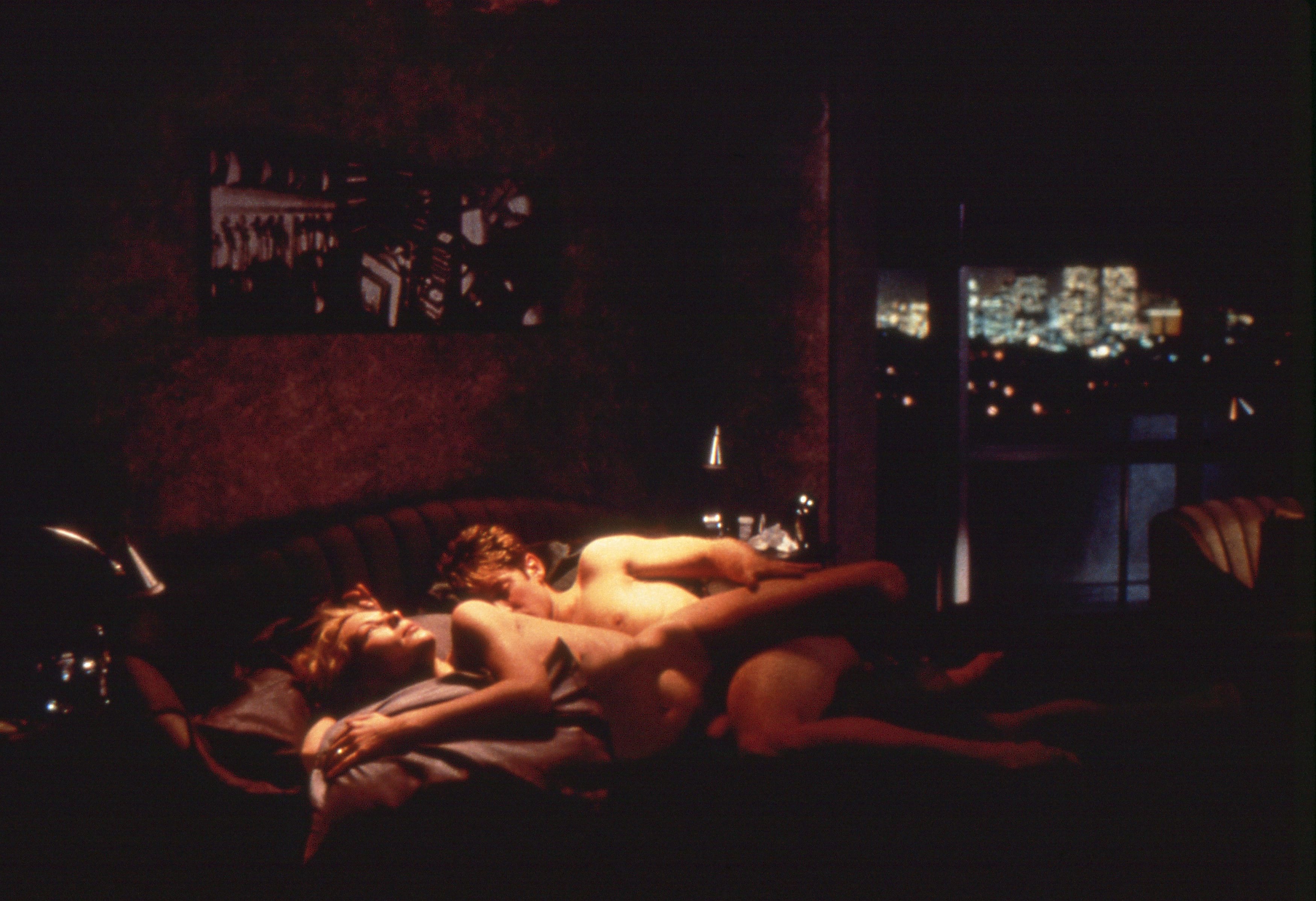
Williams: What was running through your mind while shooting graphic scenes that you knew would put the audience on edge or possibly distance them from the material?
Suschitzky: I knew going into the film that it would be controversial, but we more or less forgot about that once the production began. Of course, it's impossible to me to ever experience the picture the way any audience will ever see it. I have seen many more explicitly violent or explicitly sexual scenes in films, and I'm not sure why ours have aroused so much controversy except that they are confrontational and make some people feel awkward. The sex scenes are not just interludes which can be cut out, but part of the structure of the film.
Elmes: Controversial films pose some interesting dilemmas. When you are engrossed in the production, you work very hard to make the film as affecting as you can. Only when you view the results with an audience do you realize the cumulative effect of your efforts.
Williams: An example of that might be the scene in which Ballard and his wife are making love while she fantasizes about the idea of her husband having sex with Vaughan. The sequence is certainly longer than most filmmakers would have dared to make it, with very few shots.
Suschitzky: David has the final choice as the director, but neither of us are what you might call 'fast cutters.' I'm tired of seeing films that are cut and paced like commercials just because there is always a fear of boring an audience. David also likes the idea of intellectual confrontation, so the film is confrontational. He's not going to give you a chance to look away with your mind or your eye. And that feels right. In that particular lovemaking scene, it feels right to hold on that shot of the two of them. You have to strive to find the right tone for every scene that you shoot. There were just three angles on the actors in that scene, but they was enough. What they're doing and saying is so seizing that one couldn't possibly be bored. Of course, the film does confront the spectator at many times, and doesn't let you turn away from what might be an uncomfortable truth inherent in the material. Most of us want to turn away from that.
Suschitzky later became a member of the ASC and subsequently collaborated with Cronenberg on the films eXistenZ, Spider, A History of Violence, Eastern Promises, A Dangerous Method, Cosmopolis and Maps to the Stars.
You’ll find an interview with Cronenberg about the making of Crash and his collaboration with Suschitzky here.
Daviau was honored with the ASC Lifetime Achievement Award in 2007.
Elmes was honored with the ASC Lifetime Achievement Award in 2020.
For access to all 100 years of American Cinematographer reporting, subscribers can visit the AC Archive. Not a subscriber? Do it today.
